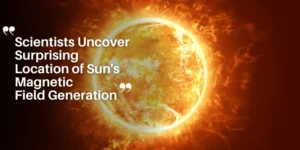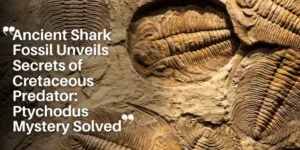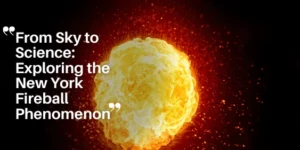Cambridge Scientists Make Groundbreaking Find: Life Associated Molecules on Distant Planet
Unmasking the Mysterious Life-Indicating Molecules 🔬🌌
K2-18b is making waves across the cosmos.
Nestled around its red sun, this exoplanet, recently investigated using NASA’s James Webb Space Telescope (JWST), holds a groundbreaking secret.
Researchers at Cambridge University have detected chemical signatures of two compounds, dimethyl sulphide (DMS) and dimethyl disulphide (DMDS), in the planet’s atmosphere.
On Earth, these molecules are mainly produced by marine microorganisms.
It’s worth noting that DMS and DMDS are found in concentrations literally thousands of times higher in K2-18b’s atmosphere than on our planet.

Pioneering Tools in Astrobiology 🧪✨
The JWST isn’t your everyday telescope. It’s a marvel that can discern the chemical composition of a planet’s atmosphere by capturing the light that filters through it.
The Cambridge team’s discovery underscores the telescope’s capabilities, suggesting that the higher concentrations of these molecules could indicate a thriving marine ecosystem.
The Importance of DMS and DMDS 🌱
The identification of DMS and DMDS is revolutionary because these molecules are typically biosignatures on Earth.
According to Professor Nikku Madhusudhan, the atmosphere’s estimated amount of these gases is colossal compared to Earth’s.
If true, it hints that K2-18b could be a fertile ground swarming with biological activity.
Analyzing the Potential for Life 👁️🗨️
Scientific Caution and the Search for Life on K2-18b 🔭
| Aspecto | Descrição |
|---|---|
| ✅ Nível de Evidência | As evidências atuais estão no nível de três sigma, o que equivale a 99,7% de certeza — animador, mas ainda insuficiente para confirmação científica definitiva. |
| 🔍 Validação Científica | Para que uma descoberta desse porte seja considerada confirmada, é necessário atingir o nível de cinco sigma — 99,99999% de certeza. |
| 🧬 Continuidade da Pesquisa | A busca por evidências conclusivas continua, aproximando-nos cada vez mais de responder se K2-18b pode realmente abrigar vida. |
Meet K2-18b: A Potential Habitable World 🌎🚀
Imagine a world located a staggering 124 light years, or about 700 trillion miles, away from Earth. This is the captivating exoplanet K2-18b.
At 2.5 times the size of Earth, K2-18b presents scientists with an intriguing opportunity to explore the potential for life far beyond our solar system.
Size and Distance 🌠
Being 2.5 times larger than Earth, K2-18b is classified as a “mini-Neptune.”
The significant size brings a higher gravitational pull and a thicker atmosphere, both crucial for potential habitability.
Although direct exploration remains far off, advanced telescopes let us peek into its secrets from afar.
Orbit and Environment 🌞🪐
K2-18b’s orbit around a red dwarf star places it in the “habitable zone” — where liquid water might exist.
Red dwarfs burn cooler and longer, offering a stable environment for potential life. The cooler climate may encourage the formation of vast oceans, fertile ground for marine ecosystems.
Potential for Life 🌿
Cambridge researchers found DMS and DMDS concentrations thousands of times higher than on Earth.
These molecules are typically produced by marine life, suggesting an ocean teeming with organisms.
As Prof. Madhusudhan puts it, this could be “the strongest evidence yet there is possibly life out there”.
While still at 99.7% certainty, the scientific world is watching closely. Ongoing observations aim to either confirm or clarify the implications of this remarkable find.
The Significance of the Discovery 🛸
The detection of life-associated molecules on exoplanet K2-18b sets an exciting precedent in the search for life beyond Earth 🌍.
Unearthly Concentrations 💨
The levels of DMS and DMDS detected are far beyond anything observed on Earth.
These molecules—typically produced by marine microorganisms—are present in abundance, fueling imagination and highlighting K2-18b’s potential to support life.
Strongest Evidence Yet ⚠️
Although not yet conclusive, the data is “the strongest evidence yet” for life beyond our planet.
A 99.7% certainty is a substantial scientific milestone, but researchers aim to reach the gold standard of five sigma.
Teeming with Life? 🧫🌌
If confirmed, the implications are immense.
A planet teeming with life 124 light years away would suggest that our galaxy could be full of habitable worlds.
Scientists are also considering geological or chemical explanations to ensure no false positives.
Scientific Caution and Verification Process 🧾🔍
Certainty Levels in Scientific Discoveries 🧠
Despite the excitement, the evidence remains at the three sigma level (99.7%).
This means that while promising, the discovery isn’t definitive. To confirm life, the community seeks a five sigma threshold (99.99999%).
Timeline for Conclusive Evidence ⏳
Prof. Madhusudhan believes that stronger evidence could be obtained within the next one to two years with additional JWST observations.
Until then, the findings remain encouraging but inconclusive.
Investigating Non-Biological Explanations 🧪
Scientists are also exploring non-biological origins for DMS and DMDS.
For example, processes involving molten rock oceans or other geochemical activity could produce similar signals.
The research is ongoing to rule out false positives and confirm whether K2-18b is truly alive with marine biology or just mimicking it.
Collaborative Efforts 🤝
Cambridge researchers are collaborating with other scientific teams to rigorize their findings.
By cross-verifying data and conducting lab simulations to see if these molecules can arise without the presence of life, they aim to eliminate alternative explanations.
This extensive verification process is crucial for ensuring that the claims stand up to global scientific scrutiny and are not simply a result of wishful thinking or observational errors.
While the current evidence is promising, it’s critical to stay grounded and allow the scientific process to thoroughly validate these potentially groundbreaking findings.
Alternative Explanations and Scientific Debate 🧭
Differing Views on K2-18b’s Environment
The potential discovery of life-associated molecules on K2-18b has ignited a fervent debate within the scientific community.
While the detection of dimethyl sulphide (DMS) and dimethyl disulphide (DMDS) is promising, alternative explanations continue to surface.
Molten Rock Ocean Hypothesis 🌋
Some scientists are skeptical about the presence of a liquid water ocean on K2-18b. Instead, they propose the idea of a molten rock ocean.
This hypothesis challenges the notion of a marine environment, suggesting instead that the planet’s surface could be composed of highly volatile molten rock.
Such an environment would preclude the existence of life as we understand it, but might still be responsible for the detected molecules through non-biological processes.
Diverse Research Interpretations 🔍
The differing interpretations extend beyond the planet’s environment.
Various research groups have scrutinized the data obtained from the James Webb Space Telescope (JWST), with some questioning even the presence of DMS and DMDS.
For instance, Dr. Nicolas Wogan at NASA’s Ames Research Center has presented an alternative interpretation, suggesting geological activity could be the source of these molecules.
This underscores the complexity of analyzing data from distant exoplanets, where subtle signals must be decoded to understand both the atmospheric composition and potential habitability.
Scientific Consensus and Ongoing Debate 🧠
Achieving scientific consensus on K2-18b’s potential habitability remains elusive.
As Professor Madhusudhan of Cambridge University has noted, further observations and collaborations with other scientists are essential to reaching the five sigma level of certainty required for confirmation.
Additionally, independent experts like Professor Catherine Heymans caution that even with perfect data, distinguishing biological origins from geological activity remains challenging.
The Broader Implications 🌌
Life Beyond Earth: A Common Occurrence?
The discovery of molecules associated with biological activity on K2-18b, if confirmed, can have groundbreaking implications on our understanding of life in the universe .
Cambridge researcher Professor Madhusudhan asserts that if life is found on K2-18b, it strongly suggests that life could be prevalent across our galaxy.
A Paradigm Shift in the Quest for Extraterrestrial Life 🚀
Humanity’s quest to find extraterrestrial life is poised at a potentially historic juncture.
The detection of dimethyl sulphide (DMS) and dimethyl disulphide (DMDS) in the atmosphere of K2-18b marks a pivotal moment.
Confirming life on another planet would radically alter our perception of the universe and our place within it.
Expanding Our Knowledge of Habitable Environments 🌎
The implications extend beyond just confirming the presence of life.
K2-18b, 124 light-years away and 2.5 times larger than Earth, could offer insights into conditions that support life in varying celestial settings.
This understanding can enrich our knowledge of planetary formation, atmospheric composition, and the diverse environments where life might thrive.
Looking Ahead 🔮
As ongoing research unfolds, the Cambridge team and global scientific community will continue their meticulous work to gather conclusive evidence.
Their collaboration aims to explore alternative explanations and validate findings, paving the way for a deeper understanding of life beyond our blue planet.
Next Steps in the Research 🧪
Continuing Observations 👁️
The Cambridge team recognizes that their discovery on K2-18b is far from conclusive, standing at a three sigma certainty level (99.7%).
To reach the five sigma threshold necessary for scientific confirmation, continuous observations are essential.
This process may take up to two years, but the commitment to achieving a one-in-a-million certainty is strong.
The James Webb Space Telescope (JWST) will play a crucial role, providing clearer and more detailed readings of K2-18b’s atmosphere.
Collaboration with Other Scientists 🌍
To avoid potential biases and ensure robust verification of their results, the Cambridge researchers are collaborating with astrophysicists and astrobiologists worldwide.
Scientists are working together to replicate these molecules under laboratory conditions, simulating non-living processes that might generate similar chemical signatures.
Such collaborative efforts will offer a multi-faceted approach to understanding K2-18b’s composition and potential for life, enhancing both scientific rigor and reliability.
Future Telescopic Observations 🔭
Upcoming telescopic observations will aim to gather more conclusive evidence regarding K2-18b’s environment.
These include the search for additional biosignatures and further analysis of its atmospheric composition.
Advanced telescopes, possibly successors to JWST, will offer even more powerful tools for scrutinizing distant exoplanets.
The objective is to uncover the mysteries surrounding K2-18b’s suspected oceanic environment and verify the presence of other life-associated molecules.
The process will be meticulous and time-consuming, but the potential rewards — understanding a potentially habitable world — make it a worthy endeavor.
The ongoing research marks a pivotal step in the search to answer one of humanity’s most profound questions: Are we alone in the universe? 🪐
The ongoing investigations and collaborations underscore a significant moment in scientific inquiry — one that bridges the gap between speculation and potential discovery.







